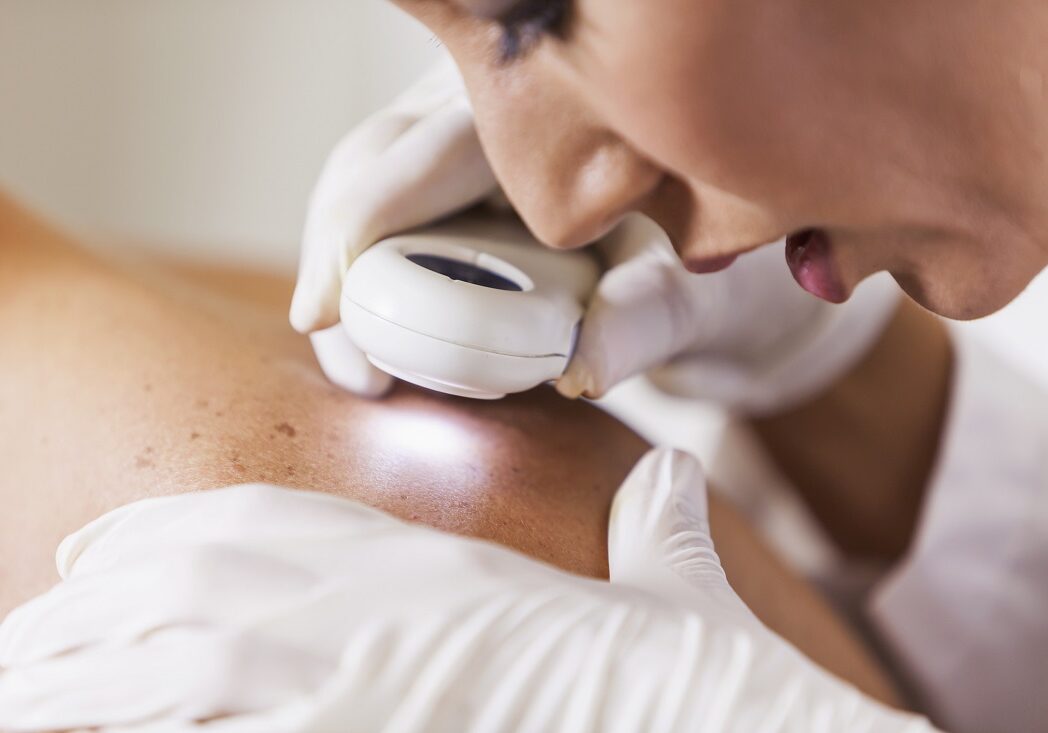The Skin Cancer Foundation
OnSpot Dermatology is proud to announce it has joined The Skin Cancer Foundation’s Corporate Council. OnSpot is pleased to support the foundation’s mission to save and improve lives by empowering people to take a proactive approach to daily sun protection and the early detection and treatment of skin cancer. We are excited to use the resources they have to better educate our patients on proper skin health. Click the button below to visit The Skin Cancer Foundation's website.

What is skin cancer?
Skin cancer is the out-of-control growth of abnormal cells in the epidermis, the outermost skin layer, caused by unrepaired DNA damage that triggers mutations. These mutations lead the skin cells to multiply rapidly and form malignant tumors. The main types of skin cancer are basal cell carcinoma (BCC), squamous cell carcinoma (SCC), melanoma and Merkel cell carcinoma (MCC).
The two main causes of skin cancer are the sun’s harmful ultraviolet (UV) rays and the use of UV tanning machines. The good news is that if skin cancer is caught early, your dermatologist can treat it with little or no scarring and high odds of eliminating it entirely. Often, the doctor may even detect the growth at a precancerous stage, before it has become a full-blown skin cancer or penetrated below the surface of the skin.
How often should individuals get an exam?
According to The Skin Cancer Foundation, Americans should be seeing a dermatologist annually. With 1 in 5 citizens contracting skin cancer by the age of 70, it is important for all Americans to get annual exams by a medical provider.
What should be expected in a skin cancer exam?
If you’ve never had atypical moles or skin cancer, the exam will likely be brief (about 10 minutes). You’ll need to remove your clothes and put on a medical exam gown. It is unlikely you will be told to remove your underwear, unless you have indicated that a spot on your genitalia concerns you. Your dermatologist will thoroughly check your skin from head to toe, paying close attention to hard-to-see spots like your scalp, back and buttocks, behind your ears, and even between your toes. Your dermatologist may utilize a small handheld magnifying device called a dermatoscope, that visualizes the outer surface of the skin (the epidermis) and the layers just beneath it.
Your doctor may biopsy one or more suspicious spots. This usually means removing part or all of the lesion and sending it to a lab for analysis. If the report comes back that the spot is skin cancer, your physician will contact you and explain the type of skin cancer and treatment options.
Remember that early detection of skin cancer is the key to the most minimal and cost-effective treatment with the highest chance of a cure. Make your appointment soon!
What treatment is available for skin cancer?
Mohs surgery is considered the most effective technique for treating many basal cell carcinomas (BCCs) and squamous cell carcinomas (SCCs), the two most common types of skin cancer. Sometimes called Mohs micrographic surgery, the procedure is done in stages, including lab work, while the patient waits. This allows the removal of all cancerous cells for the highest cure rate while sparing healthy tissue and leaving the smallest possible scar.
Mohs surgery is the gold standard for treating many BCCs and SCCs, including those in cosmetically and functionally important areas around the eyes, nose, lips, ears, scalp, fingers, toes or genitals. Mohs is also recommended for BCCs or SCCs that are large, aggressive or growing rapidly, that have indistinct edges, or have recurred after previous treatment. Some surgeons are also successfully using Mohs surgery on certain cases of melanoma.
#ShareTheFacts
- 1 in 5 Americans will develop skin cancer by the age of 70
- More than 2 people die of skin cancer in the U.S. every hour
- Having 5 or more sunburns doubles your risk for melanoma
- When detected early, the 5-year survival rate for melanoma is 99 percent

